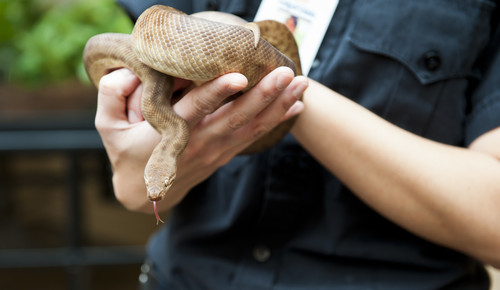Beginners Guide to owning - Childrens Python
Posted by BioSupplies on 12th Jul 2024
Deciding to become a first-time snake owner is a significant step, and choosing a Children’s Python (Antaresia childreni) can be an excellent decision. These small, docile, and easy-to-care-for snakes make fantastic pets, especially for beginners. Here’s a comprehensive guide to help you get started on your journey with a Children’s Python.
Why Choose a Children’s Python?
Children’s Pythons are native to Australia and are known for their manageable size, generally reaching about 75 to 105 centimeters in length. Their gentle temperament and relatively low maintenance requirements make them ideal for new snake owners. They are also quite hardy and adaptable, which makes them forgiving to minor mistakes that beginners might make.
Setting Up the Enclosure
Size and Type
A 75-litre tank is sufficient for a juvenile, but as your python grows, you’ll need to upgrade to a 110-litre tank or larger. Glass terrariums with secure lids are popular choices as they provide good visibility and are easy to clean.
Heating and Lighting
Children’s Pythons are ectothermic, meaning they rely on external heat sources to regulate their body temperature. A heat mat or ceramic heat emitter should be placed under one side of the enclosure to create a temperature gradient. The warm side should be around 31-33°C, while the cool side can be around 24-27°C.
Humidity
Maintaining the right humidity level is crucial. Aim for a humidity level of 50-60%. This can be achieved by misting the enclosure lightly and providing a water dish for your python to soak in. Be sure to monitor humidity with a hygrometer.
Substrate
Aspen bedding or cypress mulch make suitable substrates. Avoid substrates that retain too much moisture, such as pine or cedar shavings, which can be harmful to your snake.
Hides and Climbing Accessories
Provide at least two hides, one on the warm side and one on the cool side, to give your python a sense of security. Adding branches and climbing structures can help replicate their natural environment and encourage exercise.
Feeding Your Children’s Python
Children’s Pythons are carnivorous and primarily eat rodents. Juveniles should be fed appropriately sized pinkie mice every 5-7 days, while adults can be fed larger mice every 10-14 days. Always ensure the prey is no wider than the snake’s widest part to prevent choking or regurgitation.
Handling and Temperament
Children’s Pythons are known for their calm nature, making them easy to handle. Start with short, gentle handling sessions to get your snake used to being held. Always support their body and avoid sudden movements. Regular handling helps build trust and reduces stress for your snake.
Health and Common Issues
Shedding
Healthy Children’s Pythons will shed their skin regularly. Ensure the humidity is correct and provide a moist hide during shedding periods to help with the process. A complete, clean shed is a sign of good health.
Common Health Issues
Watch for signs of respiratory infections, such as wheezing or mucus around the mouth and nostrils. Also, monitor for mites and ticks, which can cause irritation and health problems. If you notice any signs of illness, consult a reptile veterinarian promptly.
Legal Considerations
Before bringing home a Children’s Python, check the legal requirements in your area. Some regions may require permits or have specific regulations regarding the ownership of certain snake species.
Conclusion
Owning a Children’s Python can be a rewarding experience. Their manageable size, docile nature, and relatively simple care requirements make them an excellent choice for first-time snake owners. With the right setup, diet, and handling, your Children’s Python can thrive and bring you joy for many years. Remember to do thorough research and seek advice from experienced reptile keepers to ensure you provide the best care for your new pet.
Welcome to the fascinating world of snake ownership!

